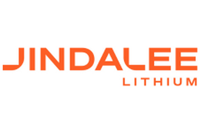Lithium Market Update: Q2 2023 in Review
Lithium prices have fallen from recent highs, but experts remain confident in the long-term outlook for the battery metal. Find out what moved the market in Q2.

Lithium prices have been on the rebound since May after falling from November to April.
Demand for the battery metal is expected to soar in coming decades, with questions about supply still to be answered.
How did lithium perform in the second quarter of 2023, and what’s ahead for the metal in the near term? Read on for an overview of the main news that impacted the lithium market in Q2, plus a look at what investors should watch out for the rest of the year.
How did lithium prices perform in Q2?
Lithium prices hit all-time highs in 2022, but they kicked off 2023 under pressure after falling in Q4 of last year.
On the supply side, COVID-19 disruptions, slow restarts of idled capacity and new supply delays all fueled the price rally that the market saw from 2021 to 2022, according to Fastmarkets. Meanwhile, on the demand end, government stimulus and a destocked market also supported the upward trend in pricing.
“Prices peaked in November, and they started to correct, and they corrected heavily,” William Adams of Fastmarkets said. “Prices have started to rebound … although we didn’t expect the selloff to be as sharp as it was.”
Speaking with the Investing News Network (INN), Rodney Hooper of RK Equity said that last year there was a greater deficit than expected as the downstream stocked up.
“Then we started this year with a bit of weakness in China with electric vehicle (EV) sales, but that's come back as of May,” he said. “The economics of lithium are playing out as expected … we've come back to where I think is a fair position for the year.”
Listen to the full interview with Hooper above.
In Q2, lithium prices reached their floor following poor downstream demand from the EV and industrial sectors, Adam Megginson of Benchmark Mineral Intelligence told INN.
Additionally, ample cathode inventories meant buyers were able to negotiate lower prices or hold off purchasing altogether.
“Since then, prices have rebounded slightly,” Megginson said. “This is because sellers have been holding back material to generate scarcity in an effort to accelerate prices upwards, despite supply being robust.”
In June, prices leveled out as producers and converters looked to shift material to boost their H1 financials.
At the moment, there’s relative stability in lithium chemical prices globally, according to Benchmark Mineral Intelligence data.
“As demand grows incrementally, supply has grown in tandem, so the market is showing signs of a short-term equilibrium,” Megginson said.
The gap between carbonate prices and hydroxide prices has narrowed significantly to where they are currently near parity.
“This is a result of faster demand recovery for carbonate from producers of lithium-iron-phosphate cathode chemistries, which are favored in China, while demand from nickel-cobalt-manganese cathode producers has been slower to recover,” he added.
What is the lithium supply and demand forecast for 2023?
Looking at supply for the rest of 2023, Benchmark Mineral Intelligence has marginally lowered its forecast.
“While we have had a couple of announcements of delays to projects coming online this year, these are not out of the ordinary for the lithium market, especially for market entrants,” Megginson said. “But overall the supply side has been robust.”
Mergers and acquisitions have been a trend in the lithium market this year, with the biggest news coming in the first quarter after lithium producers Allkem (ASX:AKE,OTC Pink:OROCF) and Livent (NYSE:LTHM) said they will join forces.
“The trend of consolidation in the market is something to look out for as it can result in greater market concentration, potentially either reducing buyers' choice or increasing the hurdles for market entrants,” Megginson said. “On top of this, maintaining or increasing the consistency of output material is a key challenge for any lithium producer, but especially newer producers.”
Looking over to demand, Fastmarkets' William Adams told INN he expects it to pick up towards the second half of the year.
Listen to the full interview with Adams above.
“We are seeing an overall market in deficit, but it's generally going to be a tight market rather than a deficit,” he said. “I think a lot will really depend on the level of restocking.”
Fastmarkets is forecasting that the lithium market will be in deficit out to 2026 on the back of strong demand from the EV segment and energy storage. However, a period of surplus is expected in the second half of the decade as more supply comes on stream, M&A activity picks up and government stimulus supports the industry.
“Surpluses could well turn to a balanced market, so expect prices to remain elevated,” Adams said.
In terms of demand from the EV sector in the short term, the latest numbers from the China Association of Automobile Manufacturers indicate strong new-energy vehicle sales last month, with good year-on-year growth from June of last year as well.
“It is worth noting that Q4 tends to be seasonally the strongest for car sales,” Megginson said.
Stricter emissions standards are expected to come into effect in China at the end of the year, which should be bullish for EV sales.
“A consequence of this legislation has been automakers in China discounting internal combustion engine (ICE) vehicles to clear inventory in advance of it coming into effect somewhat weighing on EV demand,” Megginson said. “Such discounts to shift less enticing ICE vehicles is a concern to keep in mind to the end of the year.”
All in all, Benchmark Mineral Intelligence is still forecasting a small lithium market deficit for 2023.
Speaking with INN on the sidelines of this year’s Lithium Supply and Battery Raw Materials event, Daniel Jimenez of iLi Markets said his firm’s forecast for the year has not changed significantly from the start of 2023.
Listen to the full interview with Jimenez above.
“In this industry we have seasonality,” he said. “But all in all, when you make the sum of total demand and total supply, we didn't see those surpluses that would have justified these price drops.”
What's ahead for the lithium market in 2023?
The third quarter of the year is well underway, with a few key catalysts lithium-focused investors should keep an eye out for.
Megginson said it is important to remember that there tends to be a summer lull in purchasing activity in the lithium market, especially in Europe and North America.
“As the end of Q3 nears, purchasing activity often increases,” he said. “If downstream demand is robust and inventories have been worked through, this could lead to a price rally. Otherwise perhaps the short-term equilibrium we are currently experiencing could go on and prices stay flat, or even fall given current strong supply trends.”
Similarly, Adams said it is unlikely that prices will go back up to the highest levels seen last year.
“We've seen a rebound off the lows we saw in April,” he said. “I personally think we might go a little bit higher, but then we're going to probably meander sideways to possibly a bit lower as the market consolidates.”
For Jimenez, who formerly worked at top lithium producer SQM (NYSE:SQM), prices could be higher by year end. “I don't see it as impossible that we see US$60,000 or US$70,000 (per metric ton) price levels again towards the end of the year,” he said.
Commenting on what the market might seem in terms of prices, Hooper said the downstream doesn’t seem to like anything higher than US$50,000 per metric ton, but it is not always in control.
“If we see a recovery in EV demand going up towards the end of the year, I think energy storage can add to that, and we could see something of a price squeeze, or slightly higher prices towards the end of the year,” he said.
Don’t forget to follow us @INN_Resource for real-time news updates!
Securities Disclosure: I, Priscila Barrera, hold no direct investment interest in any company mentioned in this article.
Editorial Disclosure: The Investing News Network does not guarantee the accuracy or thoroughness of the information reported in the interviews it conducts. The opinions expressed in these interviews do not reflect the opinions of the Investing News Network and do not constitute investment advice. All readers are encouraged to perform their own due diligence.
- Top 7 Lithium Stocks of 2023 ›
- Top 5 Canadian Lithium Stocks of 2023 ›
- Top 5 US Lithium Stocks of 2023 ›
- Where Does Tesla Get its Lithium? ›
- Is Now a Good Time to Buy Lithium Stocks? ›






